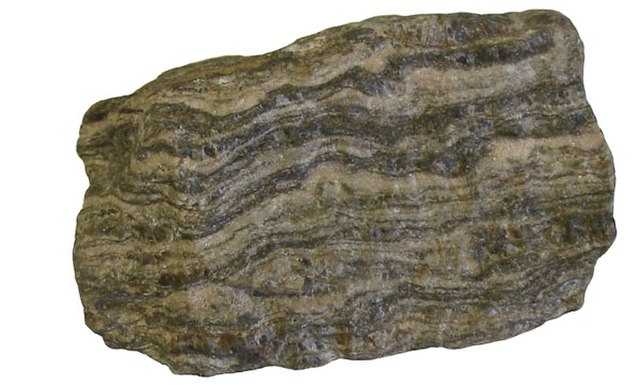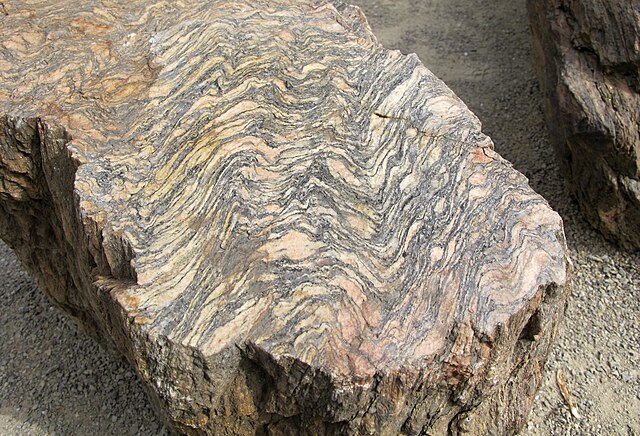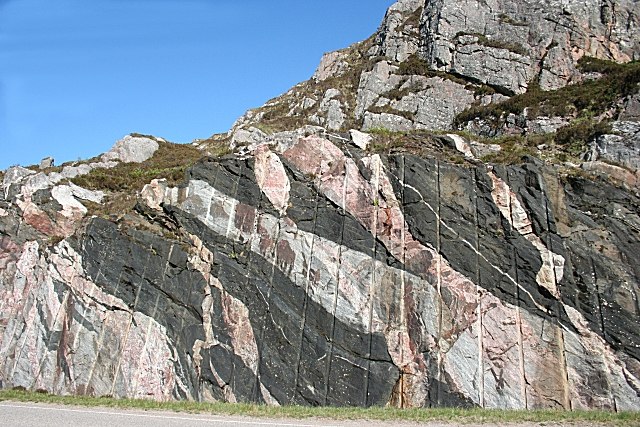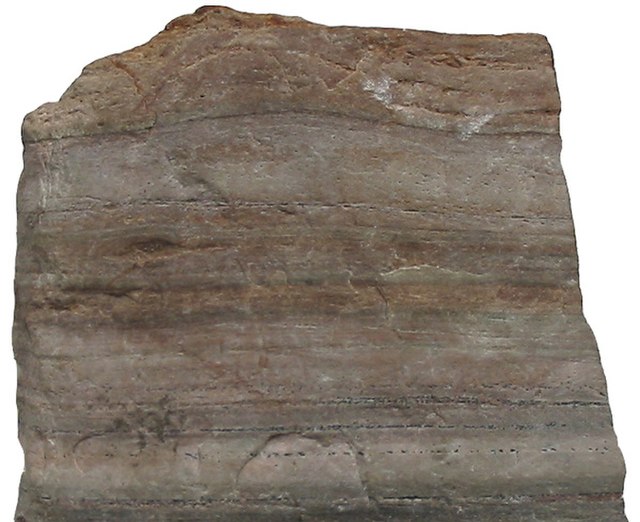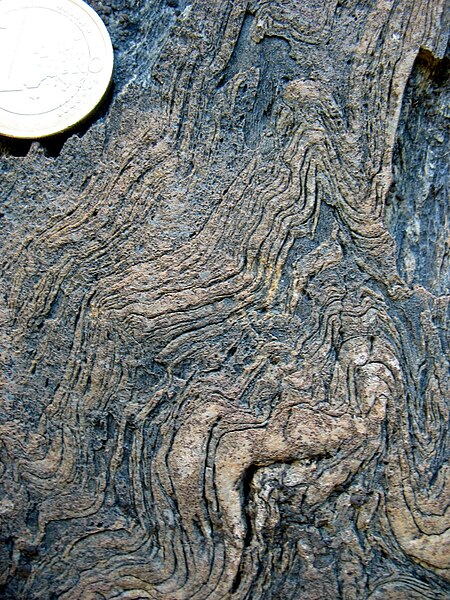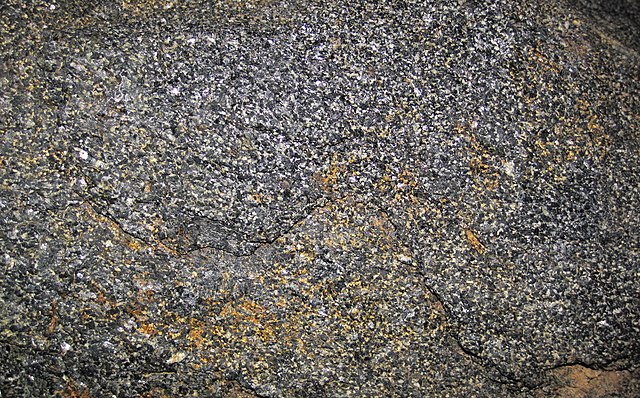Gneiss is a common and widely distributed type of metamorphic rock. It is formed by high-temperature and high-pressure metamorphic processes acting on formations composed of igneous or sedimentary rocks. Gneiss forms at higher temperatures and pressures than schist. Gneiss nearly always shows a banded texture characterized by alternating darker and lighter colored bands and without a distinct cleavage.
Sample of gneiss exhibiting "gneissic banding".
Orthogneiss from the Czech Republic
Augen gneiss from Leblon, Rio de Janeiro City, Brazil
Dark dikes (now foliated amphibolites) cutting light grey Lewisian gneiss of the Scourie complex, both deformed and cut by later (unfoliated) pink granite dikes
Metamorphic rocks arise from the transformation of existing rock to new types of rock in a process called metamorphism. The original rock (protolith) is subjected to temperatures greater than 150 to 200 °C and, often, elevated pressure of 100 megapascals (1,000 bar) or more, causing profound physical or chemical changes. During this process, the rock remains mostly in the solid state, but gradually recrystallizes to a new texture or mineral composition. The protolith may be an igneous, sedimentary, or existing metamorphic rock.
Quartzite, a type of metamorphic rock
Metamorphic rock, deformed during the Variscan orogeny, at Vall de Cardós, Lérida, Spain
Amphibolite formed by metamorphism of basalt
Metamorphic rock containing staurolite and almandine garnet

